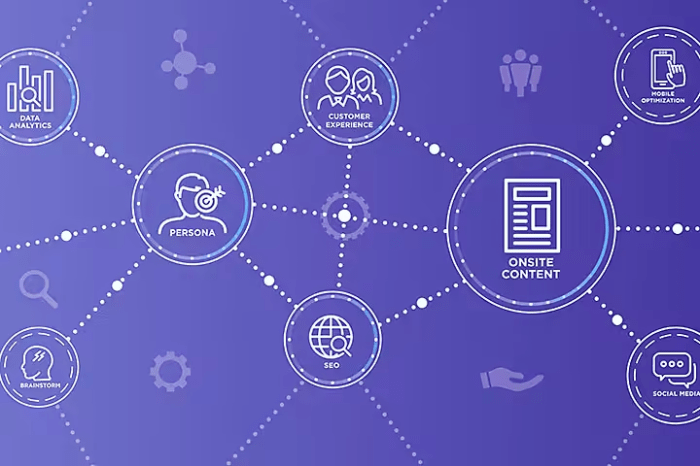Using social media to support activities such as producing is revolutionizing the way content is created, distributed, and consumed. From facilitating audience engagement to enabling content monetization, social media has become an indispensable tool for content creators.
This comprehensive guide explores the multifaceted role of social media in content production, providing practical insights and strategies for businesses and individuals alike.
Utilizing Social Media for Content Production

In the digital age, social media platforms have emerged as powerful tools for content production and distribution. By leveraging the vast reach and engagement capabilities of social media, businesses and individuals can create and share valuable content with targeted audiences.
Social media offers numerous advantages for content production. It allows creators to connect with their followers directly, fostering a sense of community and establishing a loyal audience. The platform’s interactive features, such as comments, likes, and shares, enable creators to gauge audience reactions and gather valuable feedback in real-time.
Moreover, social media provides creators with access to a diverse pool of content inspiration and collaboration opportunities. By following industry leaders, engaging in discussions, and connecting with like-minded individuals, creators can stay abreast of current trends and find inspiration for their own content.
Examples of Social Media Content Production
- Businesses use social media to showcase their products or services, share industry insights, and build brand awareness.
- Influencers leverage social media to create engaging content that resonates with their followers, building a loyal audience and establishing themselves as thought leaders.
- Content creators utilize social media to share their expertise, connect with potential collaborators, and promote their work.
Challenges and Pitfalls of Social Media Content Production
While social media offers immense potential for content production, there are also challenges to consider.
- Content creators must navigate the ever-changing social media algorithms, which can affect the visibility and reach of their content.
- Maintaining a consistent posting schedule and engaging with followers can be time-consuming and require significant effort.
- Social media platforms can be susceptible to misinformation and fake news, which can pose challenges for creators seeking to establish credibility.
Social Media as a Tool for Audience Engagement
Social media platforms are not just channels for content distribution but also powerful tools for engaging with audiences during content production.
By fostering interactions and building relationships with followers, creators can gather valuable insights, generate ideas, and create content that resonates deeply with their target audience.
Best Practices for Audience Engagement
- Encourage active participation by asking questions, hosting polls, and running contests.
- Respond to comments and messages promptly, demonstrating a genuine interest in audience feedback.
- Use social media analytics to track audience engagement metrics and identify areas for improvement.
- Collaborate with other creators and influencers to reach a wider audience and foster a sense of community.
Metrics and Analytics for Audience Engagement
- Engagement rate: Measures the percentage of followers who interact with a post.
- Reach: Indicates the number of unique individuals who see a post.
- Impressions: Counts the number of times a post is displayed, regardless of engagement.
- Click-through rate: Shows the percentage of followers who click on a link or call-to-action.
Social Media for Content Promotion and Distribution

Social media plays a crucial role in promoting and distributing content effectively. By leveraging the platform’s vast reach and targeting capabilities, creators can amplify their content and reach a wider audience.
Strategies for Optimizing Social Media Posts
- Use relevant hashtags to categorize content and make it discoverable.
- Craft compelling headlines and descriptions that entice followers to engage.
- Include high-quality visuals and videos to capture attention and increase engagement.
- Schedule posts strategically to maximize visibility and reach.
Benefits of Social Media Advertising
- Target specific audiences based on demographics, interests, and behaviors.
- Amplify content reach and visibility beyond organic reach.
- Generate leads and drive conversions through targeted advertising campaigns.
Social Media for Content Curation and Collaboration
Social media platforms are not just for creating and promoting original content but also for curating and discovering relevant content from others.
By sharing and discussing content from credible sources, creators can establish themselves as thought leaders and provide value to their followers.
Examples of Social Media Content Curation
- Businesses share industry news and articles to keep their followers informed and engaged.
- Influencers curate content from experts and share it with their followers to build credibility and trust.
- Content creators use social media to discover new trends and find inspiration for their own work.
Potential for Collaboration and Networking
Social media platforms foster collaboration and networking opportunities for content creators.
- Creators can connect with like-minded individuals and form partnerships.
- Collaborations can lead to joint projects, cross-promotion, and increased visibility.
- Networking events and online communities provide opportunities for creators to build relationships and exchange ideas.
Social Media for Content Monetization
Social media platforms offer various ways for content creators to monetize their content and generate revenue.
Examples of Content Monetization
- Sponsored content: Creators partner with brands to create and promote sponsored posts.
- Affiliate marketing: Creators earn commissions by promoting products or services through affiliate links.
- Subscriptions: Creators offer exclusive content or perks to subscribers in exchange for a monthly fee.
- Merchandise: Creators sell branded merchandise, such as t-shirts, mugs, and accessories.
Ethical Considerations and Challenges, Using social media to support activities such as producing
While social media provides opportunities for monetization, it is essential to consider ethical considerations and potential challenges.
- Creators must ensure that sponsored content is clearly labeled and does not mislead followers.
- Affiliate marketing should be done responsibly, and creators should only promote products or services they genuinely believe in.
- Subscription models should offer valuable content and clear terms of service to avoid any misunderstandings.
Social Media for Content Analytics and Optimization

Social media analytics are crucial for tracking content performance and optimizing strategies.
By analyzing key metrics, creators can gain insights into what content resonates with their audience and make data-driven decisions to improve their content production.
Key Metrics and Analytics
- Engagement metrics: Measure the level of interaction with content, such as likes, comments, and shares.
- Reach and impressions: Indicate the number of people who see and interact with content.
- Conversion metrics: Track actions taken by followers, such as website visits, lead generation, or purchases.
- Demographics and audience insights: Provide information about the audience, such as age, location, and interests.
Strategies for Content Optimization
- Identify top-performing content and replicate its success factors.
- Analyze audience insights to tailor content to their interests and needs.
- Experiment with different content formats, such as videos, images, and live streams.
- Use social media analytics tools to monitor progress and make adjustments as needed.
Detailed FAQs: Using Social Media To Support Activities Such As Producing
How can social media help with content promotion?
Social media platforms provide extensive reach and visibility, allowing content creators to promote their work to a wider audience. By optimizing posts for maximum engagement and utilizing social media advertising, content can be effectively distributed and reach a larger target group.
What are the best practices for fostering audience engagement on social media?
To foster audience engagement, content creators should prioritize creating valuable and shareable content, respond promptly to comments and messages, run contests and giveaways, and use social media analytics to track and measure engagement metrics.
How can social media be used for content curation?
Social media platforms offer vast amounts of user-generated content and industry-related information. By using relevant hashtags, following influential accounts, and joining social media groups, content creators can discover and curate relevant content to share with their audience.